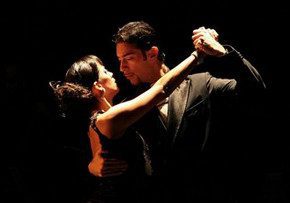Musical toys for children
It is difficult to overestimate the importance of musical toys in the life of every child. With their help, you can develop not only ordinary musical skills, but also personal qualities such as patience, attentiveness and perseverance. In addition, musical toys for children are used in many therapies against stuttering, speech stumbles and excessive nervousness of the child.
When purchasing a musical toy for your child, you should always understand its features. So, each of them will help develop certain qualities or skills (some develop motor skills, others – breathing, others – musical abilities). The general quality of all toys is that they help lure the child into play when needed. For the convenience of further classification, we will very roughly divide all musical toys for children into two large groups: general educational toys and toys that specifically develop an ear for music and musical abilities.
General educational musical toys
Such toys include virtually anything that can simply make a sound. The task that, as a rule, is set before them is simply to attract the child’s attention and keep his interest for as long as possible.
Such toys include:
- completely simplified copies of children’s folk instruments:
- primitive whistles,
- rattles,
- rattles
- traditional music boxes and organs;
- special self-sounding mechanical devices (for example, simulators of animal voices and birdsong, as well as a talking alphabet with recorded songs).
Of course, even a rattle can be clinked with a certain orderly rhythm. But these instruments themselves do not provoke with their capabilities an increase in interest in learning music. Also, they are either not able to change their sound (like completely self-sounding ones), or are limited in this (for example, a whistle can produce a sound of different volumes and durations, but only one pitch and timbre).
Toys that develop musical abilities
Among educational toys, the most common are simplified copies of real musical instruments. And since virtually any musical instrument can be represented in the form of a toy, the choice among them is simply huge.
Their main advantage is that if a child learns to control the sound being produced (choose certain sound notes, volume, order), then later he will more easily master the corresponding musical instrument. Thus, such toys can be considered as a preparatory step in receiving special education.
And if such a goal is in the interests of parents, then they should pay more attention to the choice of educational musical toys. The most important criteria should, of course, be the child’s personal preferences. All musical toys for children develop an ear for music, but some of them have a greater impact on the development of a sense of rhythm, while others – on an ear for melody.
Activities and games with drums, castanets, tambourines, maracas, wooden spoons and others will help develop a child’s sense of rhythm. As a rule, children really like such musical rhythmic toys also because of their ease of handling.
And almost all melodious-sounding children’s toys can be classified as developing pitch hearing. And these are, as a rule, all kinds of wind and string instruments. But there are exceptions here too. For example, the same xylophone, although it is a percussion instrument, due to its melody, belongs to this group of toys.
Of all the musical toys for children, I would like to especially highlight children’s synthesizers. They are attractive due to the richness of their capabilities. Firstly, there are many different timbres and rhythms. Secondly, several melodies are usually recorded in the device’s memory that attract children’s attention – in most cases, children really like them, trying to pick them out by ear. Thirdly, a recording function is available on this instrument; pampering with recording your own playing can also seriously captivate a child, encouraging him to new musical experiments.
But regardless of their characteristics, absolutely all musical toys for children are beneficial and make the child’s development more versatile and harmonious. The only important thing is that they simply exist!
By the way, the instrument shown in the picture is called kalimba – it is one of the oldest musical instruments of the peoples of Africa, touching with its simplicity and melody. You can listen to how the kalimba sounds in this video – the performer will play the Ukrainian folk song “Shchedryk” on the kalimba. Beauty!




